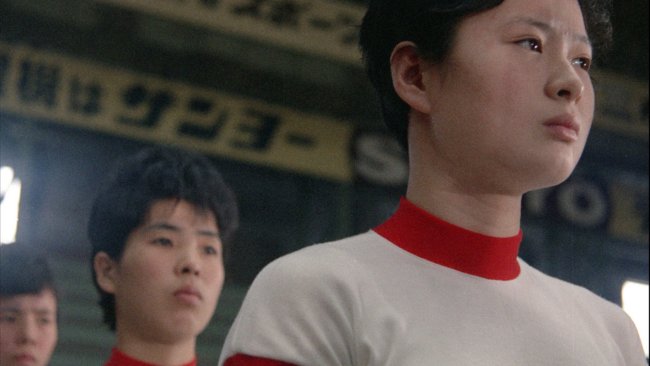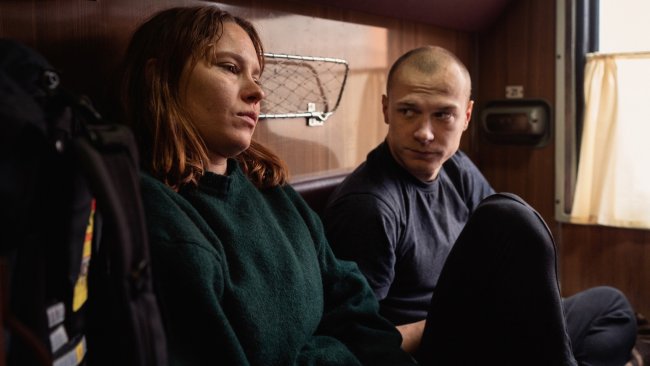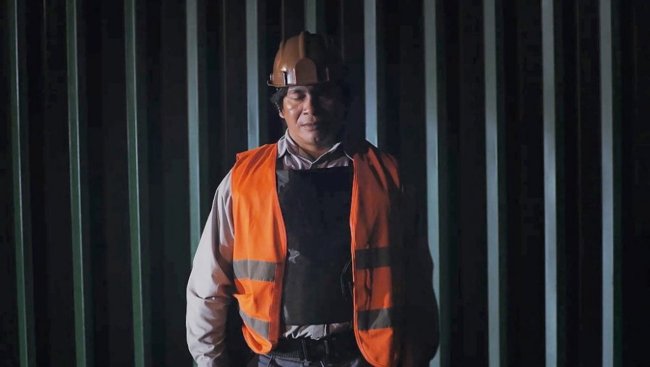Monster
In Kore’eda’s cinematic world, the children’s realm is as enigmatic as the adult sphere appears obscure, calculated and prepared to sacrifice truth for self-preservation.
Text: Yun-Hua Chen

A maestro in unravelling the complex inner worlds of youth, Hirokazu Kore’eda’s exploration of young souls, their struggles and traumas, is gentle, empathetic and deeply humane. They seek tenderness and togetherness in a voluntarily formed family in Shoplifters (2018), between half-siblings in Our Little Sister (2015), beyond blood connections in Like Father, Like Son (2013), and even under extreme conditions of total abandonment and neglect, such as in Nobody Knows (2004). In Monster, premiered at the Cannes Film Festival and widely screened in the international film festival circuit including at autumn film festivals such as TIFF and Viennale, continues with this quest in the enigma of pre-teens’ psyche as well as their awe-inspiring resilience, just like yet another piece that leads to his tapestry about the 400 blows necessary for a child to transition into adulthood.
Monster opens with a building engulfed in flames, a blaze said to have been caused by arson at a hostess bar frequented by locals, including schoolteacher Mr. Hoti (Eita Nagayama). While the single mother Saori (Sakura Ando) and her fifth-grade son Minato (Soya Kurokawa) watch the blaze from their balcony, Minato asks if it’s possible to swap a pig’s brain with a human brain. This peculiar idea, or possibly an abusive remark disguised as a scientific question, is suggested by the schoolteacher, Minato tells Saori. This seed of eccentricity sprouts into a string of bewildering and disturbing behaviour, exhibited by Minato: he recklessly jumps from a moving car, sings a haunting song with the lyrics «who is the monster» in the eerie confines of an abandoned tunnel, throws a tantrum during recess and returns home with only one shoe. The school’s principal and teachers, when confronted by Saori, appear numbed and robotic as they recite pre-written official statements and execute precise 90-degree bows, seemingly more dedicated to protocol than delving into the root causes of these disturbances. The mystery deepens when school bullying comes to the forefront of their discussions. At this point, the audience is coaxed into flirting with multiple hypotheses and manoeuvring through the labyrinthine puzzle set by the director, contemplating who the real bully might be and how to explain this eeriness. Is the one who appears to be a bully the real bully, or the one that seems suspiciously innocent, or is there a supernatural element at play?
A visual meditation on the subjective nature of our interpretations
In Kore’eda’s cinematic world, the children’s realm is as enigmatic as the adult sphere appears obscure, calculated and prepared to sacrifice truth for self-preservation. While children’s falsehoods stem from cryptic, inscrutable motives, adults tend to mislead and deceive for concrete, utilitarian reasons. This film title, “Monster”, is deliberately dubious and thought-provoking, challenging viewers to re-evaluate their preconceived notions of monstrosity. As the narrative shifts its perspective from a distraught mother to an elusive teacher, Monster compels us to piece together judgments based on the perspective of a particular character – unravelling what transpired, whodunnit, and apportioning blame. This thread of thought, deeply ingrained not only in our cinematic experiences but also in the way we steer through life, is precisely what this triptych-structured film aims to confront through its unique cinematic means. Can we, with limited information from a single perspective, rightfully pass judgment? Are we capable of suspending judgment and re-evaluating our unfounded biases when reminded that there is always an alternative viewpoint? In the spirit of Akira Kurosawa’s Rashomon, the multiple versions of the story in Monster keep encouraging us to form new theories and subsequently force us to confront our prior misjudgements. It does so by rewinding each perspective to the inciting moment of the blaze.
In Monster, the human heart, with all its intricacies and volatility, are counterpointed by visual imagery of life’s most fundamental elements
Formally, the film’s score traverses a wide spectrum of musical genres, a masterful mélange of Ryuichi Sakamoto’s neoromantic expressive string passages. His hybrid approach to scoring, and the use of heavily processed, reverberant piano sounds, elegantly accompanies the shifting tonalities of horror, suspense, coming-of-age and socio-realism, gently punctuating without intruding and eliciting unspoken emotions without succumbing to sentimentalism. The cinematography mirrors this equilibrium, alternating between confined indoor spaces and the expansive, vibrant, lush greenery that is reachable beyond rusty fences. In a serenely dignified manner, it is a poetic exploration into the darkest recesses of the human heart, where we instinctively anticipate malevolence simply because it diverges from the norm. In Monster, the human heart, with all its intricacies and volatility, are counterpointed by visual imagery of life’s most fundamental elements – all-consuming fire, drips of water that become a deluge, the earth trodden by young boys, and the protective woods providing a sanctuary for outcasts. Meanwhile, the film’s colour palette is gentle and nature-inspired, bathed in the mild hues of blue and green.
Central to the film’s emotional resonance are the performances of the two young actors, Soya Kurokawa as Minato and Hinata Hiiragi as Yori. Their embodiment is effortlessly poignant and convincingly ambiguous, portraying suppressed and instinctual energies that renders them both fragile and ferocious, melancholic and potentially callous. The complexity of the age they convey, as pre-adolescents navigating various definitions and categories encompassing queerness, sexuality, and societal norms, is so layered and nuanced that it far exceeds what is typically expected of their age.
Monster is an ode to ambiguity
In this contemporary tale weaving themes of childhood - as well as uncertainties and fantasies that come with it - bureaucratic weight in the adult world, misunderstandings rooted in preconceptions and barriers based on pretence, Monster peels off the veneer of courtesy to unveil the benignity and systematic monstrosity that exist in parallel. Monster is an ode to ambiguity, a possible deconstruction of a “monster”, an audio-visual reflection of our partial vision, probing the embellished façade while celebrating the fluidity of our perception – a visual meditation on the subjective nature of our interpretations.
This article contains a third-party video. If you would like to watch the video, please adjust your settings.
Watch
Screenings in Swiss cinema theatres
Info
Monster – Kaibutsu | Film | Hirokazu Kore’eda | JAP 2023 | 123’ | Geneva International Film Festival 2023
First published: November 10, 2023



